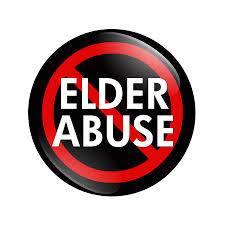In this article, we discussed the meaning of elder abuse, the signs, the intervention, furthermore we talked about the factors and control
Definition
Elder Abuse, also known as abuse of older adults, is purposefully harming a person who’s older than 60. This could be by intentionally wreaking pain (physical or emotional), neglect or financial exploitation.
The Signs of Elder Abuse
Signs and symptoms of elder abuse can include:
Injuries such as bruises, cuts, or broken bones
Malnourishment or weight loss
Poor hygiene
Symptoms of anxiety, depression, or confusion
Unexplained transactions or loss of money
Withdrawal from family members or friends
Large sums of money missing from bank statements
The senior cannot access their financial records
The elder provides gifts or monetary reimbursement in exchange for companionship
Strange or unexplainable transactions
Signs of Emotional Abuse
Signs of Financial Abuse
Signs of Sexual Abuse
Signs of Abusive Caregivers
The Intervention of Elder Abuse
Elder abuse interventions occur in a range of settings, including healthcare and social or legal settings, and they may be primary, secondary and tertiary in nature. A logic model was developed to capture the broad range of approaches that may be used to prevent or reduce it.
The Factors of Elder Abuse
Current diagnosis of mental illness.
Current or past abuse of drugs or alcohol.
Current physical health problem.
Past experience of disruptive behavior.
Past experience of traumatic events.
High levels of stress.
Poor or inadequate preparation or training for caregiving responsibilities.
Inadequate coping skills.
Exposure to or witnessing abuse as a child.
Social isolation.
Relationship risk factors
High financial and emotional dependence upon a vulnerable elder.
Past family conflict.
Inability to establish or maintain positive prosocial relationships.
Lack of social support.
Societal risk factors
Staffing problems and lack of qualified staff.
Staff burnout and stressful working conditions
Individual protective factors
Emotional intelligence.
Relationship protective factors
Having social support.
Community protective factors
Sense of community, meaning, residents feel connected to each other and are involved in the community.
The Prevention/ Control of Elder Abuse
Listen to older adults to understand their challenges and provide support.
Educate yourself and others about how to recognize and report abuse.
Learn how the signs of abuse differ from the normal aging process.
Check-in on older adults who may have few friends and family members.
Conclusion
Elder abuse is a critical social, health, and economic problem. Approximately 10 percent of adults age 60 and older have experienced physical abuse, psychological or verbal abuse, sexual abuse, neglect, or financial exploitation. It is also possible to provide over-burdened caregivers with support. This can include help from friends, family, or local relief care groups, adult day care programs, or counseling.


